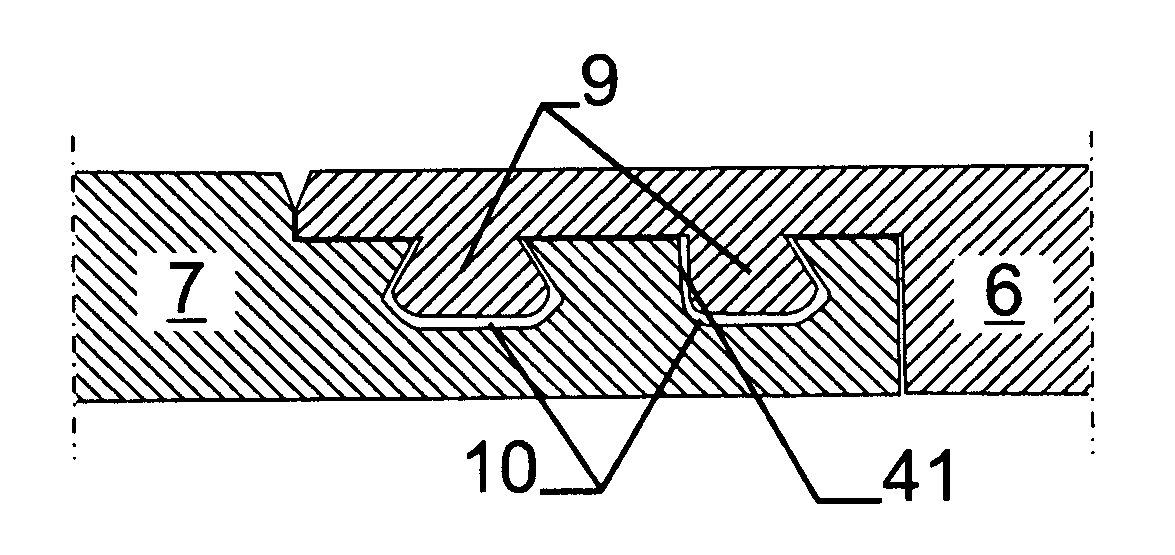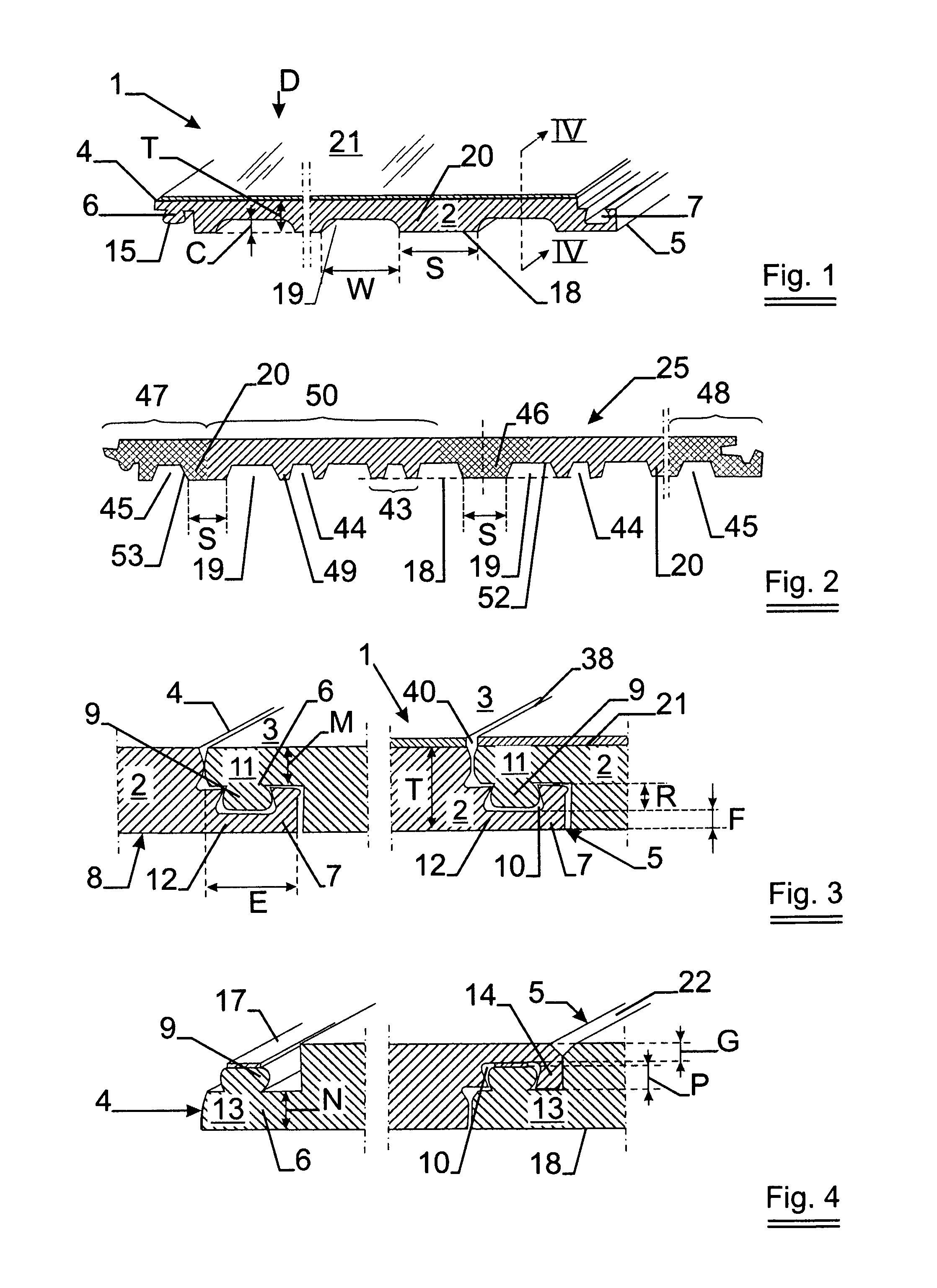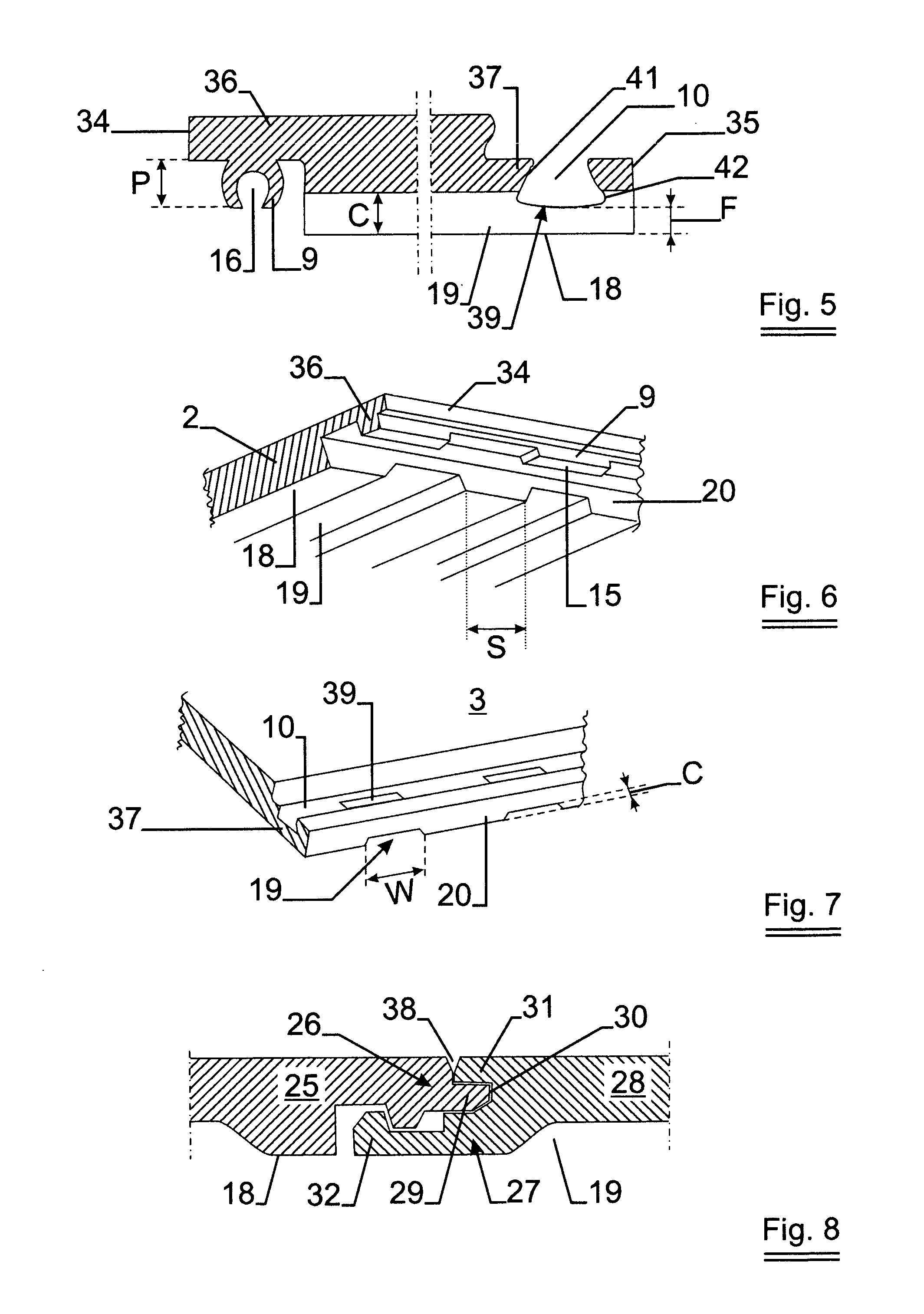Covering panel
a technology of covering panel and spherical plate, which is applied in the field of covering panel, can solve the problems of uneven strength and local differences of plates, particle or even granules of recycled synthetic materials, and the weight of these panels remains too high
- Summary
- Abstract
- Description
- Claims
- Application Information
AI Technical Summary
Benefits of technology
Problems solved by technology
Method used
Image
Examples
Embodiment Construction
[0035]The covering panel 1 according to the figure shows a preferred embodiment according to the invention for very thin panels with an extruded support plate 2, made from synthetic plastic material and generally with a commonly known waterproof, decorative and wear-resistant protective coating 21. These panels can have a total T thickness of 3 to 6 mm. The support plates 2 have a flat and usually a rectangular or square top surface 3. On the pair of opposite lengthwise sides 4, respectively 5 a male profile edge 6, respectively a complementary female profile edge 7 is produced, either simultaneously during the extrusion of the plate 2 or only afterwards by means of a milling process on plate edges that were not profiled during the extrusion. If so desired, profile edges 6, 7 preformed during extrusion can be finished more precisely by means of a suitable milling process afterwards.
[0036]By milling, the male profile edge 36, respectively the complementary female profile edge 37, are...
PUM
| Property | Measurement | Unit |
|---|---|---|
| thickness | aaaaa | aaaaa |
| thickness | aaaaa | aaaaa |
| thickness | aaaaa | aaaaa |
Abstract
Description
Claims
Application Information
 Login to View More
Login to View More - R&D
- Intellectual Property
- Life Sciences
- Materials
- Tech Scout
- Unparalleled Data Quality
- Higher Quality Content
- 60% Fewer Hallucinations
Browse by: Latest US Patents, China's latest patents, Technical Efficacy Thesaurus, Application Domain, Technology Topic, Popular Technical Reports.
© 2025 PatSnap. All rights reserved.Legal|Privacy policy|Modern Slavery Act Transparency Statement|Sitemap|About US| Contact US: help@patsnap.com



